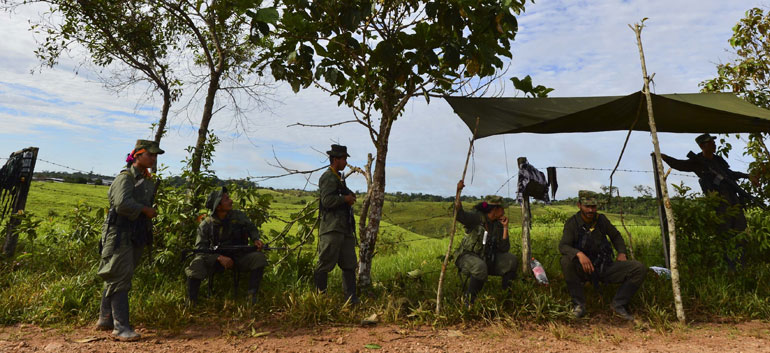Prosecutors have released documents showing that, during the 1980s, the FARC planned to take over Colombia within a period of eight years, according to conflict analysis website Verdad Abierta.
According to the website, it received a batch of FARC documents, commanders’ testimonies and additional evidence that demonstrate the FARC’s initial military strategy to remove the government from office and take control of the state.
The FARC expansion strategy was designed by the rebels’ top commanders in 1982 and finally approved by the guerrillas’ political body in 1989.
The extensive strategy consisted of three “policies:” social; territorial; and financial.
The territorial policy was aimed at making territorial gains on state forces.
Three stages
Between 1990 and 1992, during the first phase of the rebels’ territorial expansion plan, the FARC actively sought the creation of 60 fighting units with 300 members each. To finance this, the FARC tried to raise $56 million to finance the 18,000-men army.
The second stage of the plan — scheduled to be executed between 1992 and 1994 — sought the expansion of the army with another 20 fighting units with a total of 32,000 men. The guerrillas estimated that this would cost $200 million.
The third stage, to be carried out between 1994 and 1996, included the creation of a massive base, the Center of Strategic Deployment, in the eastern cordillera of the Andes Mountain range, close to Bogota, where half of the FARC’s planned army would be stationed and from where the rebels would try to take over the capital.
Dealing with the army
To confront Colombia’s national army, the FARC decided to station their fronts close to army divisions, battalions and garrisons. Each front would be given the order to attack the military, “uprooting them, wearing them out and demoralizing them.”
Following the harassment of the army, the FARC planned to execute their expansion plans in massive attacks on towns in order to seize control of them and slowly overtake and consolidate national territory at the cost of the state.
To further weaken the state while carrying out their massive offensive, the FARC sought to paralyze Colombia’s economy.
“When this phase of the struggle is in full development, the columns and mobile companies will take position in the deployment center that should coincide with the insurrection of the population,” the Verdad Abierta report stated, quoting the FARC.
The next step was to take control of territory east and south of Bogota and force an economic shutdown, weakening the state and reducing state support to a minimum.
In reality
While the strategy was never carried out in full, the guerrillas’ actions in the 1990s did demonstrate their objective of taking control of the country. In particular, the FARC’s Eastern Bloc, under the command of now-slain commander “Mono Jojoy”, was able to successfully take control of a number of military bases and towns in the east and south of the country.
Coincidentally, the FARC expanded its forces, increased its control of drug trafficking and began to kidnap Colombians on a large scale, using the ransom payments to finance the offensive.
Experts have said that it was the FARC’s kidnapping activities in particular that resulted in the guerrillas eventually losing most of their popular support.
The guerrilla offensive carried out in the 1990s brought Colombia to the brink of becoming a ‘failed state’ and spurred the creation and expansion of the paramilitary group AUC in the second half of that decade.
Around the turn of the century, Colombia and the United States agreed to “Plan Colombia,” a joint strategy to push back the rebels and fight drug trafficking. The execution of this plan in the first decade of the 21st century successfully displaced the FARC to remote areas.
The guerrillas are now in talks with the administration of President Juan Manuel Santos to negotiate the end of the conflict, which began in 1964.
Sources
- Así planearon las Farc tomarse el país en los años 90 (Verdad Abierta)


